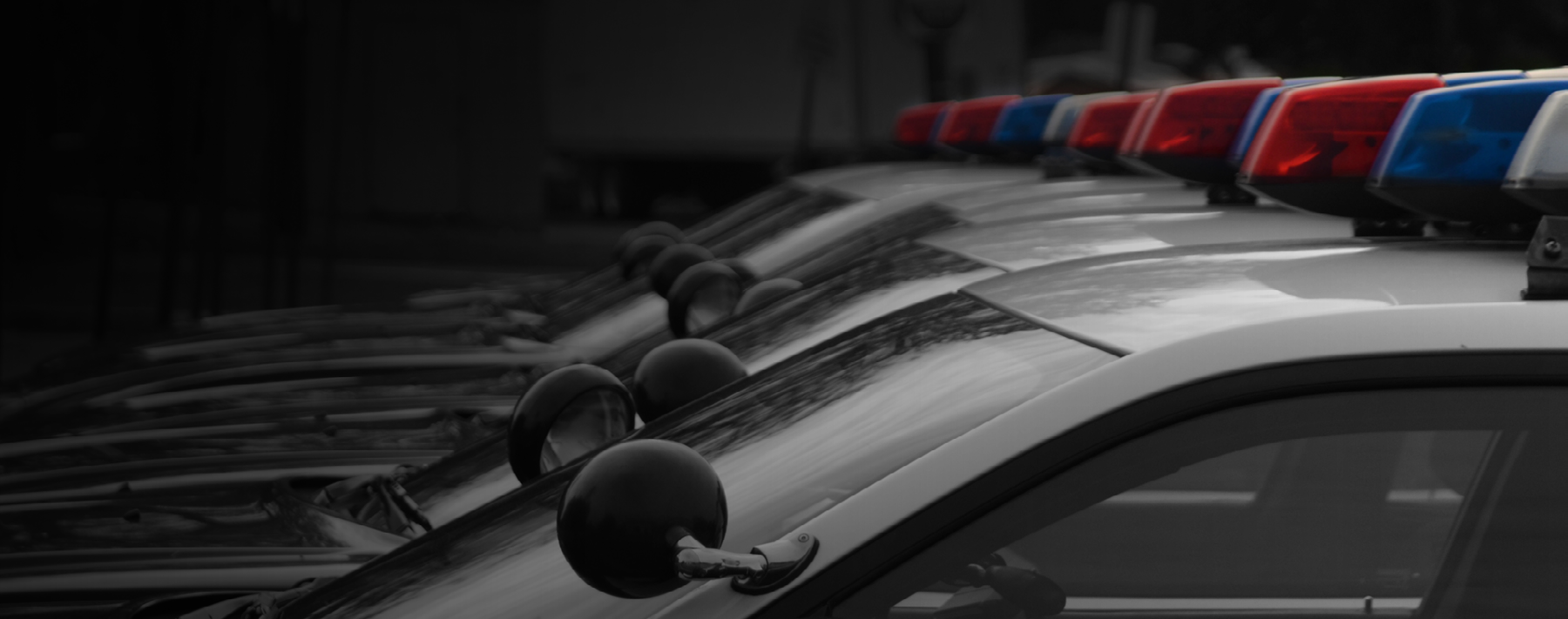In my previous article I described how ventilation and respiration work together to accomplish what we commonly think of as breathing. I also pointed out dangerous misunderstandings about breathing, including the false belief that a small amount of air movement or an occasional breath is enough for adequate respiration, and that being able to talk means the person is adequately breathing.
Avoiding preventable, in-custody deaths is imperative for all law enforcement officers. In this article I describe normal and abnormal breathing and how officers might mistake an arrestee’s worsening conditions for compliance. I’ll also provide some tips on abnormal breathing recognition for law enforcement, as well as some simple hands-on airway management techniques that don’t require equipment.
Normal Breathing
If you understand what normal breathing looks and sounds like, you will be better able to recognize and respond to signs and symptoms of abnormal breathing. Normal breathing includes breathing at rest where you have a low oxygen demand. It also includes breathing during high oxygen demand, such as during exercise or recovery from exertion. Although markedly different in appearance, both states—and everything in between—are normal given oxygen demands.
Adult breathing rate at rest is between 12 and 20 breaths per minute. Infants and children breathe faster. Knowing this, consider some general rules:
- If you notice someone’s breathing, there might be a problem with their breathing. Normal breathing is usually effortless and quiet, whereas breathing during exertion or while recovering from exertion is normally rapid and deep.
- Breathing can be difficult to assess.
- Unconscious people who are a dying sometimes fade out slowly and their breath might decrease gradually.
If you notice someone’s breathing, there might be a problem with their breathing.
Abnormal Breathing
Abnormal breathing can be the result of illness or injury. Illnesses might include pre-existing medical conditions or drug/alcohol use. Body position can also play a part in breathing problems. Likewise, people who are physically compromised, in poor physical condition or obese may suffer more difficulty breathing while lying down.
Injury can also be a factor, especially to the torso (which includes the back). Injury to the abdomen, or abdominal pain, can also affect breathing. Furthermore, increased anxiety and fear may also impact breathing.
Note that normal breathing at rest can sometimes appear shallow. But shallow breathing can also be a sign of serious trouble, especially alarming in people who are unconscious or have a decreased level of alertness.
Some signs and symptoms of breathing problems include:
- Rapid breathing
- Slow breathing
- Shallow or irregular breathing
- Noisy breathing
- Flaring nostrils
- Skin color changes and sweating
- Anxiety or fearful facial expressions
- Restlessness, agitation and confusion
Breathing requires both ventilation and respiration at an appropriate rate depth and air quality. A few breaths or gulps or gasps of an unconscious person should not be mistaken for adequate breathing, nor should abdominal movement alone be mistaken for adequate breathing. These unusual breathing patterns could be a sign that death is near.
“I Can’t Breathe!”
You may have heard a person recovering from exertion say, “I can’t breathe.” Normally as people recover from exertion, the sensation of being air-starved gradually fades away. However, sometimes the sensation persists, despite an open and clear airway.
Anxiety, fear, restlessness, agitation and confusion can be the result of poor brain function due to inadequate breathing or other medical conditions. While we know that a suspect’s failure to cooperate or comply with verbal orders can be a ploy that threatens officer safety, officers must also understand that failure to comply may be rooted in unseen medical causes.
Compliance vs. Death
People who are acting extremely agitated or aggressively disoriented could be experiencing a true medical emergency that requires EMS care and likely sedation. Officers may be called to identify, contain, capture, control or restrain those suffering these events. In these cases, the police may be arriving at a medical emergency that may look like a behavioral emergency or a crime. The physical control of these people and other noncompliant or violent people can require an enormous amount of physical force.
Officers must understand the risks and minimize those risks. In the struggle to physically control a person, officers must not erroneously mistake unconsciousness for compliance. Because dying people sometimes fade out quietly, officers might overlook this critical decline in condition. What may appear like hard-won compliance may in fact be the process of death.
Managing Breathing Problems
The things we can do to help people with breathing problems can range from reassurance to simple body and upper airway positioning to full CPR. Every officer must know the hands-on techniques that require no equipment and can be used to maximize airflow through the nose, mouth and throat as they wait for the ambulance or EMS. First, we must recognize when there is a problem, call for EMS, and take action to help the person move air as freely as possible by one or a combination of the following techniques.
Note: I will provide brief descriptions, but performing these techniques correctly requires practice with experts. Law enforcement officers should consult local EMS to get some hands-on practice with some of the techniques, and should follow the recommendations of the American Heart Association.
Unusual breathing patterns could be a sign that death is near.
Head-Tilt/Chin-Lift: By tilting the head back and lifting the chin we can create a straighter air passage through the mouth and nose down to the lungs. This maneuver can also lift the tongue and other soft tissues in the throat out of the way. The head-tilt/chin lift technique should not be used on those suspected of having a cervical spine injury.
Jaw Thrust: The jaw thrust creates an exaggerated underbite by jutting the jaw forward. When needed, it can be used to manage the airway of those we think might have a neck or back injury and we do not want to move their head.
Log Roll: The log roll may be necessary if you have to clear the airway of something. This is where roll the subject onto their side as a unit, keeping the head and neck aligned with the rest of the body. Ideally, this is done as a coordinated effort of two of more people.
Recovery Position: The recovery position is essentially placing someone on their side to allow for good airflow and any drainage from their mouth and nose. The arms and legs are positioned in a stabilizing manner.
Other techniques include clearing the airway of obstructions and CPR.
Additionally, we should demonstrate compassion and be careful to not say or do anything thoughtless. Breathing problems can cause significant anxiety in those with the problem and those nearby. So take care not to express your own anxiety in thoughtless words or actions.
Conscious People with Breathing Problems
When a conscious person complains of or demonstrates breathing problems, we should do the following:
- Provide fresh air and allow for good ventilation. This can include loosening tight clothing or anything else that may restrict their breathing.
- Call EMS if requested or if you are at all concerned.
- Engage in simple acts of reassurance or attempts to calm them. Not only is it compassionate, but calm people generally have a lower oxygen demand. So, if a person is having a medical problem, one thing we can do if we can’t give them supplemental oxygen or in addition to supplemental oxygen is try to decrease their demand for oxygen by helping them stay calm.
- Whether they’re conscious or not, if someone is lying on the ground, kneel down, put a hand on their shoulder, and tell them help is coming and that you will stay with them.
Unconscious People
Things to do for people who are unconscious or have a decreased level conscious or alertness:
- Always request EMS.
- Ensure an open and clear airway while also protecting the spine of those suspected of having neck or back injuries.
- For ill or unconscious people on the ground who can be safely rolled onto their side, position their body in the recovery position.
- Reassure them as previously stated.
Don’t Know What to Do?
Uncertainty comes with the job of law enforcement officer. While recognizing that sometimes there isn’t much we can do, we are all expected to do something helpful. What to do for people with breathing problems when you are unsure what to do:
- Request EMS for expert help.
- Demonstrate concern.
- Recognize the value of a team approach to solving problems and caring for the sick or injured.
- Professionally manage any anxiety you or your co-workers have. Be very careful of what you say or do when feeling nervous or stressed.
Serving and protecting people from harm includes understanding how breathing works, applying simple single hands-on techniques to manage the airway, and reassuring them as we await EMS.



